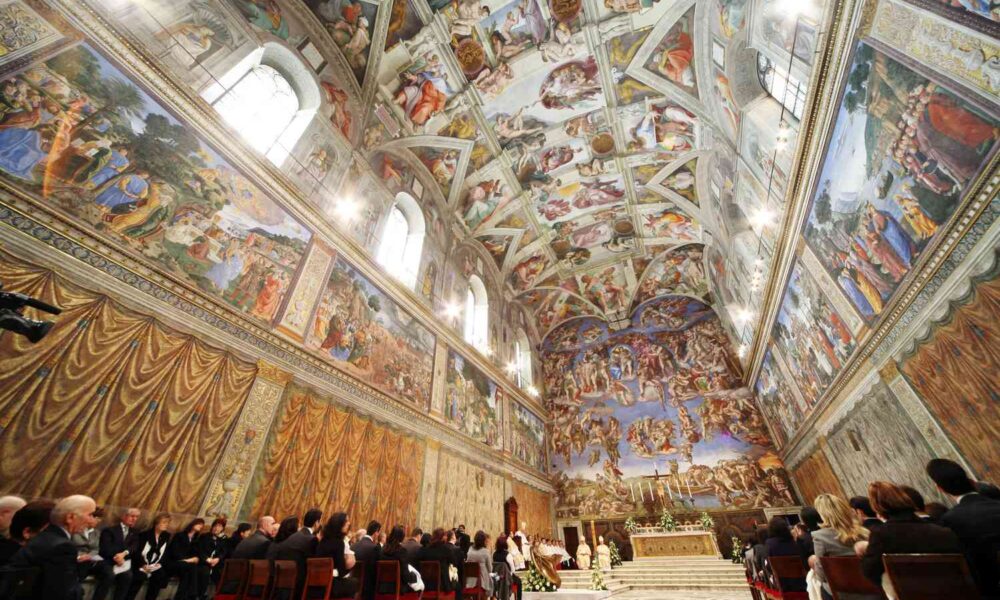Jeannie Marshall lived in Rome for 12 years before setting foot inside the Sistine Chapel.
“I could hardly bear the thought of standing amongst a crowd only to look at something that seemed simultaneously too complex to be understood just by looking at it and too worn out from overexposure,” she writes. “[I]t never seemed like the right time to take on such an enormous symbol of Western culture.”
Then her sister Marion died. Over the next few years, her mother and brother Ken passed away, as well. So did her husband James’s father, followed by his brother-in-law Michael, and then his mother.
After her mother’s death, she decided it was time to set foot inside. Her decision wasn’t spurred on by a grand epiphany or a sudden compulsion, but rather, by emptiness. The long-awaited visit was unfulfilling. It was overwhelming. It “seemed too much, too enormous, and too religious.”
Then she went back. Again. And again.
Marshall’s book All Things Move, which started out as an essay, raises crucial questions about how we interact with art and why it matters at all. How should we look at art? What makes art great? Who is art for? What if you wait and prepare your entire life to see a great piece of art, and it doesn’t live up to your expectations?
All Things Move explores how relationships to art can evolve over different stages of life. Beginnings and endings are carefully woven into the narrative. Chronologically, Michelangelo painted The Deluge first, starting with the end of the world. During her third visit, Marshall has a crucial realization: The people depicted on this panel trying to climb out of the water are not survivors—they’re all about to die.
The book is also chock-full of lyrical descriptions of everyday life in Rome. Marshall describes the different parts of Rome she sees while running errands: The metro, fruit sellers, groceries, pigeons, and art shops. But also apartment buildings abandoned during the 2008 financial crisis, graffiti (both fascist and anti-fascist), and brass cobblestones in front of houses engraved with the names of their former inhabitants who had been sent to concentration camps during the Second World War.
Douglas Anthony Cooper’s accompanying photos are beautiful, but he is careful to not only capture beautiful things. Marshall was drawn to the candour of his photos. Art blends into everyday streetscapes: A red ball, a dog in a sweater, and a nun on the metro. The photos of the city are often black and white. The art is mostly in colour.
Marshall puts moments into melody when writing about photos in colour. The book explores how art has the ability to not only uniquely capture and explain key moments in human history, but to do the same for one’s own personal history. In other words, art should matter because it matters to you.
Intriguingly, Marshall is not Christian. She ruminates on the idea that perhaps we ought to approach religion in the way we approach art. The Sistine Chapel has served as both the backdrop and foreground for many religious conflicts throughout history. In a time when the humanities are increasingly seen as decorative, art can evoke an invaluable sense of openness and uncertainty.
“Great Art” can often have a highbrow, inaccessible aura, but Marshall’s individual approach to the Sistine Chapel makes it so compelling. She writes about her grandmother, growing up in a family of fur trappers in North Bay, and falling in love with Michelangelo. She weaves her personal history alongside centuries of religious conflict, struggle, beauty, and identity.
“I wanted to see something enduring, something that outlasts its creator. I wanted to feel part of a world that means something, a world that continues; I wanted to feel that those we had lost were part of it too.”
All Things Move will be published on April 4, available at your local bookstore and as an audiobook.









